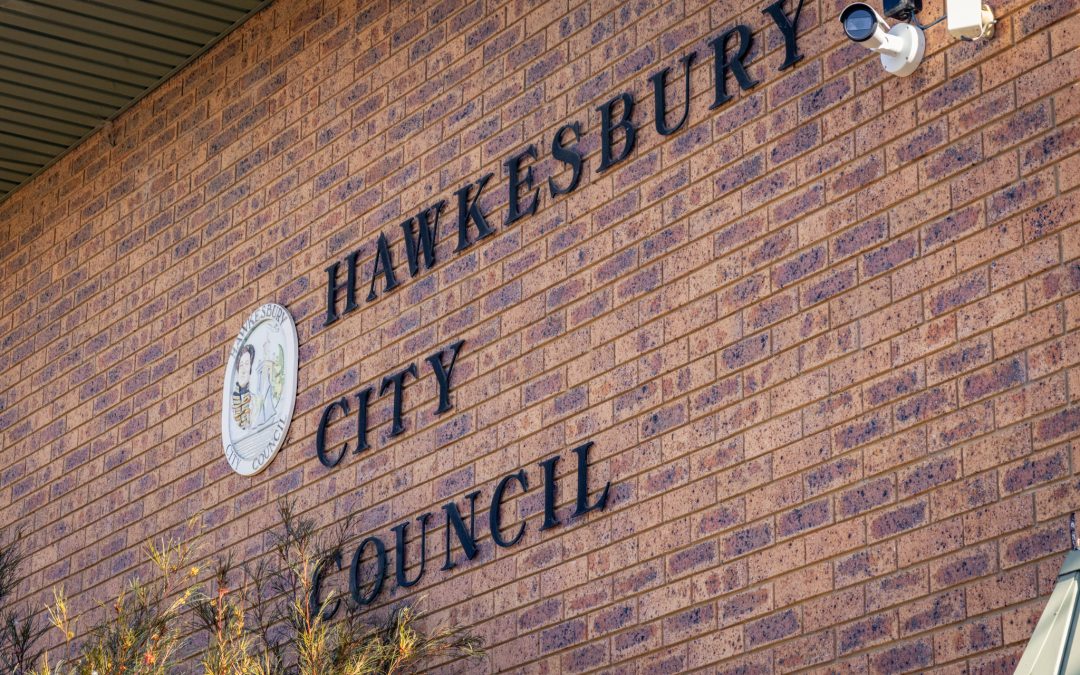Hawkesbury Post contacted all...


Hawkesbury Post contacted all...

In a heartwarming recognition of community...

After more than two decades of dedicated service, the...
The new Richmond Bridge, will tower over the surrounding riverine landscape, at more than double the height of the existing bridge. The structure will also be far longer, a necessity to rise above floods crossing the lowest part of the floodplain. Set to be approximately 18.4 metres high at its peak, the new bridge will be a much more dominant structure than many may have envisioned.
Transport for NSW (TfNSW) has confirmed that the new structure will be 10 metres higher than the current bridge, which stands approximately 8.4 met43s tall. “The flood resilience of the bridge is determined by the height of water it can withstand while remaining operational. The new bridge, with deep girders, will be resilient to a 1 in 20-year flood level,” a TfNSW spokesperson told the Hawkesbury Post. The 1:20 flood level is 15.3 metres, while the 1:100 flood level reaches 18.9 metres.
The new bridge will be built about 50 metres downstream of the existing structure, which will be retained. It will also extend longer than the current bridge, connecting to the existing Bells Line of Road at a higher point. On the southern side, the new approach road will also be elevated to withstand a 1 in 20-year flood.
The existing Richmond Bridge is built below the 1 in 2 chance per year flood level and is closed in moderate flood events when flood levels reach about 8 metres. Prior to 2020, Richmond Bridge had not closed due to flooding since 1992. Since 2020, Richmond Bridge has closed six times due to flooding with flood levels reaching up to 14.4 metres in March 2021
Transport for NSW told the HP that the new bridge would have provided an evacuation route during all flood events since 2020. “We are finalising the concept design and Review of Environmental Factors for Stage 2 of the New Richmond Bridge and Traffic Improvements project,” the spokesperson said. The Environmental Impact Statement (EIS), initially due in mid-2024, is yet to be released. This report will include a crucial hydrology study to assess the impact of flooding on the route and surrounding lands and evaluate how the new infrastructure will affect water movements across the floodplain. Public feedback on these plans will be sought later this year.
The Final Hydrology Report prepared as part of the Green Route in January 2020 assessed seven routes, including one similar to the new route and bridge. According to documents previously obtained by the HP under the GIPA application (Freedom of Information), all proposed routes except the Purple Route would effectively dam the river upstream during major flood events.
“The preliminary results showed that by raising the road crossing, the floodplain would block a significant quantity of flow, necessitating numerous culverts or floodplain bridges to meet flood impact requirements,” the January 2020 report stated. It’s yet to be seen how this large structure will impact floodplain flooding but the route is similar to others assessed in the 2020 report.
A separate report, “The New Richmond Bridge and Traffic Improvements Revised Preferred Option Report dated December 2022 (but relied upon as late as 2023) suggests that the new bridge will alleviate traffic congestion. However, the assumptions in the report appear conservative today with recent planning documents seen by the HP forecasting at least 7,000 additional dwellings planned west of the river in coming years.
“Traffic demand in the study area during peak periods is expected to increase significantly in the coming years, with a forecast 2,000 additional dwellings west of the Hawkesbury River, which will further increase congestion and travel times,” the 2022 report stated. “The new bridge and associated road infrastructure upgrades would address traffic congestion between Richmond and North Richmond, cater for future growth, and improve flood resilience,” the 2022 report said.
The last Community Update on the project website was posted in December 2022, with the latest project update in June 2023. During this update, TfNSW reported collecting traffic data and conducting ground surveys and geotechnical work, which will continue for the next few months. “Our activities include drilling holes and digging pits to test soil and pavement composition. We will also use a barge with a drill rig on the Hawkesbury River,” the June 2023 Project Update stated.
TfNSW has confirmed plans for road widening, wall and mound building, and some land acquisition. Residents have long complained about the lack of consultation on the project. As recently as last month, some residents were unaware of the final route, while others expressed concerns about the project’s impact, particularly on shops in North Richmond, including the North Richmond Post Office, and increased traffic and truck movements in residential streets near Hobartville.
Residents along Southee Road and Inalls Lane will be significantly affected, facing increased noise levels, more inconvenience, and a loss of scenic views without gaining direct benefits. The new main road will be constructed parallel to Southee Road, approximately 35-40 meters from property boundaries, turning the eastern end of Southee Road into a cul-de-sac. Inalls Lane will be widened to accommodate the new road with an 80 km/h speed limit, involving some land acquisition and restrictions on driveway access at the Castlereagh Road end.
The project will alter views of paddocks and the Blue Mountains, replacing them with a noise barrier that could be a mound or a wall, ranging from 3.5 to 4.5 meters high. While the century-old Pecan trees along Southee Road are expected to remain, more trees may need to be removed if a mound is chosen over a wall for noise mitigation. Properties within the gaps of the noise barrier will be outfitted with noise reduction measures like double glazing.
The Federal and NSW governments have pledged a combined $500 million for the New Richmond Bridge. However, some are now questioning whether this will be sufficient to fund the project. The former Liberal NSW government announced the new “preferred option” for the bridge in December 2022 after facing significant project delays, community opposition, and inadequate consultation.